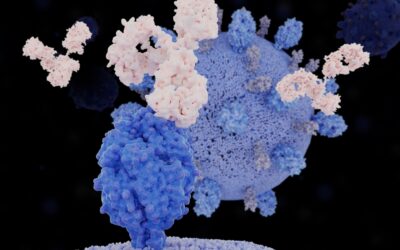As our understanding of genomics and biological pathways expands, human diseases, once thought untreatable through conventional therapies, are well within our realm of intervention. Oligonucleotides (“oligos”) and bispecific antibodies (BsAbs) are two new modalities that are generating some of the biggest buzz in the world of drug development. Oligos can disrupt a disease’s natural progression, and BsAbs boast almost 100 unique formats for fighting cancer.
Understanding oligos’ and BsAbs’ bioanalytical properties and immunogenicity (i.e., the immune response generated in an organism) can help sponsors develop critical new forms of disease intervention.
RNA-based drugs
RNA-based drugs (oligonucleotides) are among the most popular new modalities used to treat human diseases. Once researchers identify a disease-relevant messenger RNA (mRNA), they design a complementary oligonucleotide that can bind to it, disrupt its protein production and derail the disease’s natural course.
There are 12 U.S. Food and Drug Administration (FDA)-approved oligonucleotide-based drugs on the market in 2021, but researchers anticipate more given their effectiveness in treating disease and the relative ease with which they bind to mRNA. One of the most significant advantages of RNA-based drugs is that researchers can use them to target diseases once considered “undruggable” with small molecules or monoclonal antibodies. The National Institutes of Health estimates that conventional methods can target only one-fifth of all proteins, hence there exists a vast opportunity for oligonucleotides to target and treat diseases.
Oligonucleotides are diverse, and their mechanisms of action broad. There isn’t a single bioanalytical approach that can be used for every biologic in the class. That creates immense potential for assays using various bioanalytical techniques, each with its advantages and disadvantages. These are a few of the bioanalytical platforms and specific considerations:
• qPCR assay
The quantitative polymerase chain reaction (qPCR) assay uses fluorescent probes to detect, characterize and quantify nucleic acids. The assay measures the intensity of the fluorescence emitted and how quickly it builds up during each cycle. qPCR is a highly sensitive and precise assay but can be inefficient when DNA/RNA fragments are shorter than 18 base pairs (bp).
• Hybridized immunoassay
This assay uses locked nucleic acid (LNA) enhancements to target small or highly similar RNA or DNA molecules. It can also produce results faster and in greater frequency than qPCR assays. LNA probes create a highly sensitive and specific assay that can target shorter DNA/RNA fragments that are not susceptible to cross-reactivity, which is common in conventional immunoassays.
• Liquid chromatography-mass spectrometry (LC-MS) methods
LC-MS methods can achieve high specificity, accuracy and precision. They are also highly reproducible and offer wide dynamic ranges. The arrival of high-resolution mass spectrometry (HRMS) techniques can enhance identification and quantification. Unfortunately, LC-MS methods are not as sensitive as qPCR or hybridization immunoassays.
Understanding immunogenicity is another critical step in successfully developing RNA-based biologics. Natural immunologic responses can sometimes create anti-drug antibodies (ADA), impacting the product’s pharmacologic and toxicologic effects. The biological and chemical structures of oligonucleotides render them less immunogenic than conventional protein therapeutic products. That said, there isn’t a universally accepted immunogenicity assay for oligonucleotides.
Bispecific antibodies (BsAb) and multidomain protein therapeutics
BsAbs and multidomain protein therapeutics are derived from recombinant DNA molecules and the drug products consist of two or more distinct antigen-binding domains. They can recognize different antigens (i.e., foreign compounds or infectious agents) or different epitopes (i.e., the part antibodies attach to) within the same antigen. There are more than 85 formats of BsAbs, and the increasing popularity of this modality is reflected in the more than 110 drug candidates in active clinical development.
BsAbs can simultaneously target cancer and immune cells and eliminate the cancer cells by blocking disease pathways and suppressing tumor activity. According to the National Institutes of Health, BsAb therapy shows active immunization against specific tumors, providing long-lasting antitumor immunity in the organism.
BsAbs come with distinct bioanalytical and immunogenicity challenges because of their complex and variable structures. The U.S. FDA recommends multiple pharmacokinetic (PK) assays to quantify the levels of bound and unbound BsAbs. Moreover, BsAb complexity means the conventional bridging assay used to detect immunoglobulin G (IgG) in ADAs will likely be ineffective in delivering acceptable levels of sensitivity and tolerance. The U.S. FDA recommends exploring a diversity of assay formats to achieve successful results.
The bottom line
Oligos and BsAbs present exciting possibilities for what scientists once considered “untreatable” diseases. That said, their complex structures and diverse mechanisms of action create challenges for pharmacokinetic, toxicokinetic and immunogenic analyses. Collaborating with a laboratory testing partner can help mitigate these challenges and position your program to succeed in the intricate world of new modalities.
For Part 2 of the new modality blog post, click here.
Speak to a scientist today about new modality development!
As a global company with operations across Asia, Europe, and North America, WuXi AppTec provides a broad portfolio of R&D and manufacturing services that enable the global pharmaceutical and life sciences industry to advance discoveries and deliver groundbreaking treatments to patients. Through its unique business models, WuXi AppTec’s integrated, end-to-end services include chemistry drug CRDMO (Contract Research, Development and Manufacturing Organization), biology discovery, preclinical testing and clinical research services, helping customers improve the productivity of advancing healthcare products through cost-effective and efficient solutions. WuXi AppTec received an AA ESG rating from MSCI for the fourth consecutive year in 2024 and its open-access platform is enabling around 6,000 customers from over 30 countries to improve the health of those in need – and to realize the vision that “every drug can be made and every disease can be treated.”


